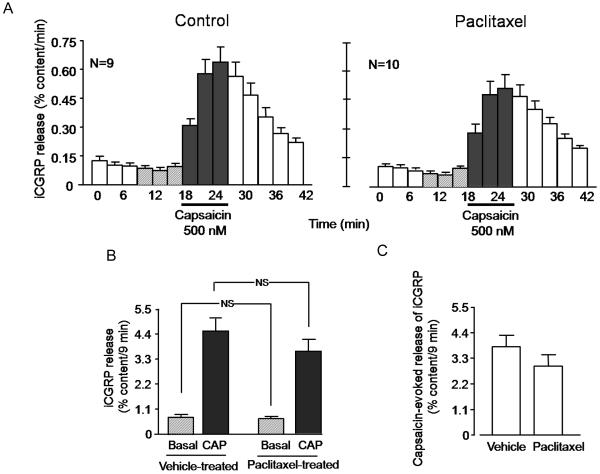Figure 7.
Chronic administration of paclitaxel does not decrease capsaicin-evoked iCGRP release from rat spinal cord slices. In all cases, each column represents the mean ± SEM. A: iCGRP release in each 3-minute perfusion sample expressed as percent of total peptide content per minute. The horizontal bar indicates the time when the tissues were exposed to 500 nM capsaicin. The left panel represents release in slices taken from vehicle-treated rats, whereas the right panel is from rats chronically administered paclitaxel. B: Release of iCGRP over 9 minutes in vehicle-treated or paclitaxel-treated rats as indicated. Basal release is the sum of the 3 collections prior to capsaicin, whereas capsaicin-stimulated release is the sum of the three collections in the presence of capsaicin from figure A. C: Evoked release of iCGRP (capsaicin-stimulated release minus basal release presented in figure B) in vehicle- or paclitaxel-treated rats, as indicated.

